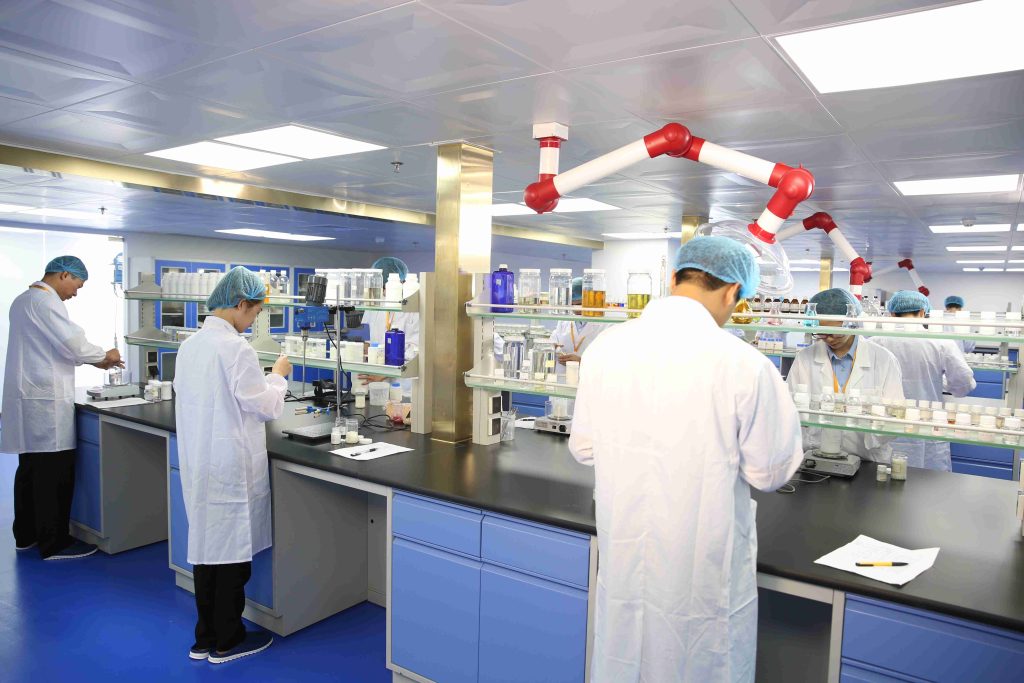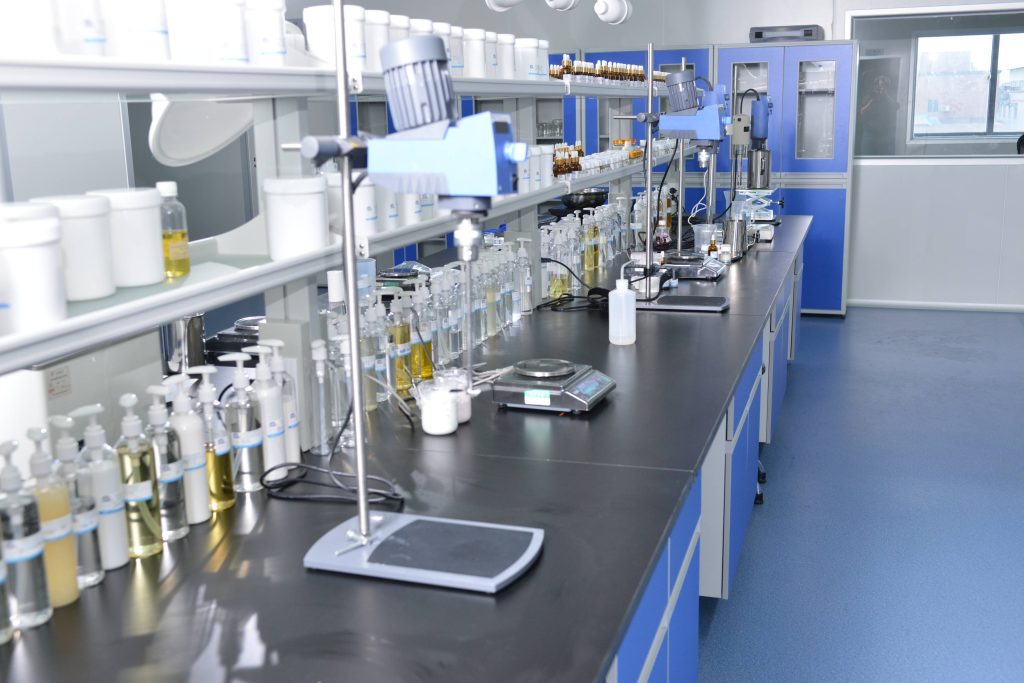Current and Future Trends in Cosmetic Manufacturing Technologies
The manufacturing of cosmetic ingredients encompasses four primary categories: plant and animal extraction with refinement, chemical synthesis, bio-fermentation, and synthetic biology. Among these, chemical synthesis remains traditional, mainly used in auxiliary ingredient production such as certain sunscreens and moisturizers. Plant extraction and bio-fermentation are the industry’s mainstream methods, while synthetic biology represents the frontier of future development.
1. Plant Extraction Technology: Riding the Wave of Clean Beauty
Plant and animal extraction methods are essential for isolating effective compounds from natural sources. From plants, we derive oils (volatile oils), flavonoids, polyphenols, polysaccharides, and other compounds that serve purposes like whitening, anti-aging, moisturizing, sun protection, and preservation. Animal-based extracts such as animal oils, glycosaminoglycans, placental extracts, hydrolyzed silk, and honey products are widely applied in moisturizing, soothing, skin softening, anti-aging, and antibacterial formulations.
Modern extraction methods now incorporate advanced techniques such as supercritical CO₂ extraction, microwave-assisted extraction, ultrasonic extraction, enzymatic hydrolysis, and biomimetic extraction. These methods often result in higher efficacy, fewer impurities, and lower environmental impact. With the clean beauty trend booming, natural plant extraction techniques have gained remarkable traction. In recent years, consumer demand for naturally derived ingredients has surged. For instance, international brands now feature over 15,466 products with natural claims, marking a 10% CAGR from 2015 to 2020.
Plant-based ingredient extraction has become a cornerstone for many global ingredient suppliers, who are leveraging this as a core competitive advantage. These companies focus on developing more effective extraction techniques, reducing pollution, and enabling customization, which are key factors in the sustainable advancement of natural cosmetics.
2. Chemical Synthesis: Primarily for Auxiliary Materials and Synthetic Actives
Chemical synthesis involves transforming natural resources or simple molecules through chemical reactions—such as oxidation, reduction, alkylation, and acylation—to create compounds with specific properties or complex structures. This method produces both basic chemicals (like ethanol, acetic acid) and fine chemicals (such as synthetic polymers).
In cosmetics, many synthetic raw materials serve as stabilizers, surfactants, thickeners, preservatives, emulsifiers, antioxidants, synthetic fragrances, synthetic colorants, and, importantly, sunscreens and synthetic moisturizers. Although chemical synthesis can mimic the effects of natural ingredients, it is generally more efficient and controlled, meeting rigorous production standards.
However, chemical synthesis has limitations in creating potent active compounds. Complex production paths, environmental impact, and sustainability challenges restrict the method’s effectiveness compared to newer techniques like bio-fermentation and synthetic biology.
3. Bio-Fermentation Technology: The Industry’s Mainstay and Hotspot
Bio-fermentation is a modern biotechnology involving enzyme engineering, microbial metabolism, and biochemical processes. This process utilizes microorganisms like fungi, bacteria, and yeasts, which react with organic substrates to produce target active compounds or cells. Through this technique, both small molecules like amino acids, organic acids, flavonoids, and polyphenols, as well as larger molecules like polysaccharides, peptides, and proteins, can be synthesized. These products are highly bioavailable and efficacious, making them ideal for skincare formulations.
Bio-fermentation is especially valuable for producing functional ingredients with skin benefits or surfactants used in various cosmetics. For example, Gluconobacter bacteria can produce vitamin C, known for its anti-aging and whitening properties, while Escherichia coli bacteria can synthesize glycine betaine, a raw material for non-ionic surfactants.
The advantages of bio-fermentation technology include (1) improved safety and control, (2) energy-efficient production with minimal pollution, and (3) the ability to enrich active compounds, reduce toxicity, and develop novel efficacies. Due to these benefits, bio-fermentation has become a mainstream production technique in the industry.
4. Synthetic Biology: The Future of Ingredient Manufacturing
Synthetic biology, the “third biological revolution” following DNA double helix discovery (1953) and the human genome sequencing (2003), blends life sciences, engineering, and information sciences. Its applications span pharmaceuticals, biofuels, agricultural products, and cosmetics, making it a technology to watch closely.
In synthetic biology, DNA is essentially “coded” to direct organisms to perform desired reactions. By modifying gene circuits within cells, synthetic biology can create ingredients that were previously difficult to manufacture or obtain naturally. For example, yeast cells are engineered to process substances like glucose, methanol, oleic acid, and glycerol, resulting in high-yield production of astaxanthin, β-carotene, and lycopene. Cosmetics ingredients generated through synthetic biology include natural compounds like astaxanthin, resveratrol, glycosides, and squalene.
While synthetic biology’s leading commercial applications are in health and medical industries, it is rapidly expanding into cosmetics, agriculture, and other consumer sectors. North America and Europe currently dominate the synthetic biology market, while the Asia-Pacific region is also seeing notable growth.
5. Blending Technology: A Barrier Against Ingredient Duplication
Beyond these four core technologies, blending has become a strategy for R&D companies aiming to enhance product complexity and defend intellectual property. As cosmetic ingredient competition intensifies, companies increasingly rely on proprietary blends to create unique formulations that are difficult to replicate. Simple single-molecule ingredients can be easily duplicated once patent protection expires. However, custom-blended solutions, particularly those with bio-fermented or plant-extracted components, are harder to copy, due to specific environmental and production variables affecting ingredient performance.
Blended ingredients can also receive independent trademark protection, further elevating the barriers for competitors. For R&D-driven companies, blending represents a powerful method to strengthen product uniqueness and defend market position.
In conclusion, the four main manufacturing technologies have become integral to raw material production, with synthetic biology emerging as a transformative force. As companies continue exploring novel solutions, the trend of developing complex blended formulations is also expected to solidify its position as an innovative and protective approach for maintaining a competitive edge in the cosmetics industry.







